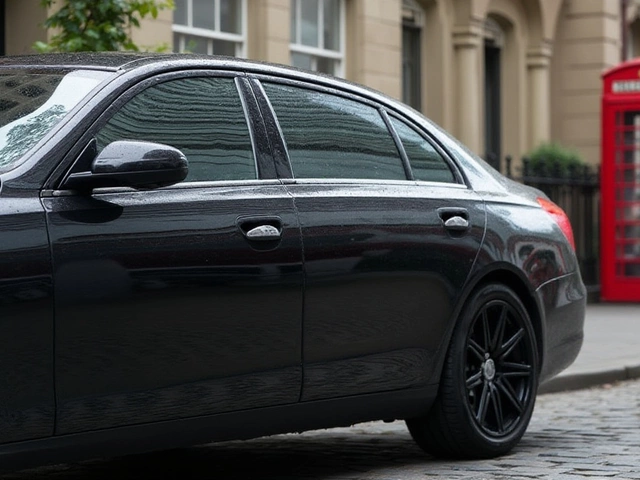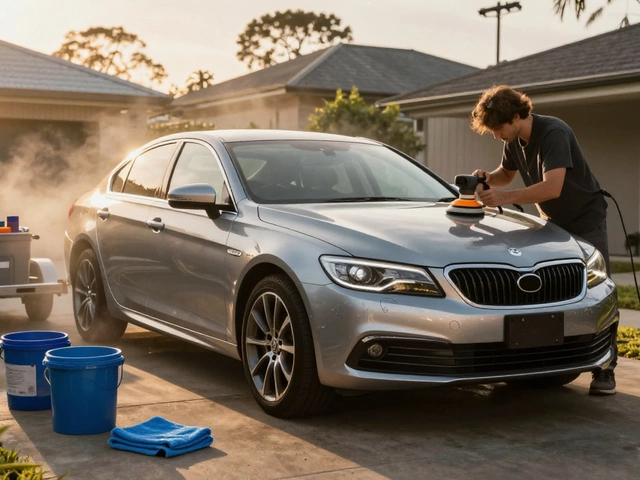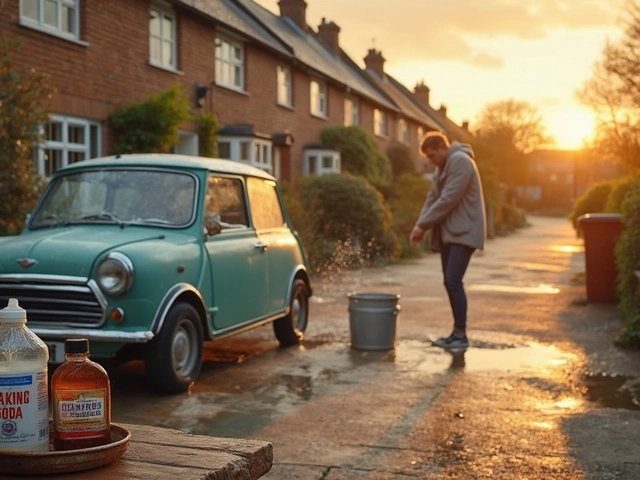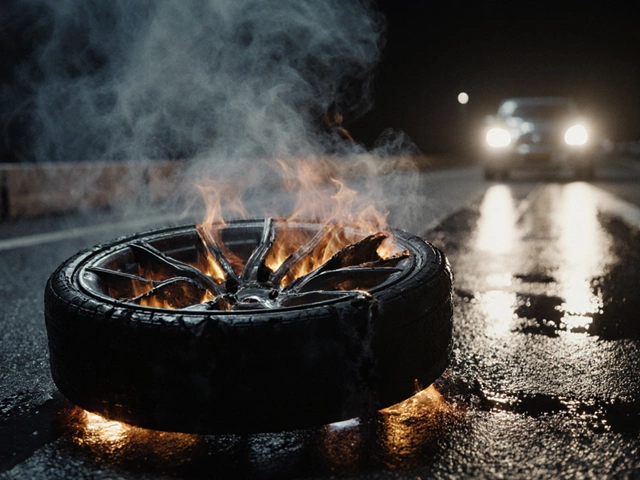There's no denying the aesthetic appeal and performance advantages of alloy wheels. They're lighter, stronger, and capable of turning heads with just a glimpse. But what happens when these wheels, prized for their elegance, encounter the all-too-common pitfalls of regular driving? Scratches, chips, and bends from curbs and potholes can blemish their beauty and performance.
Many drivers face the dilemma of whether their cherished alloy wheels can be adequately repaired or if replacement is the only option. In this exploration, we'll delve into how bad the damage can be fixed, the variety of techniques available, and the costs and considerations of each option. We'll also share some valuable tips to keep your alloy wheels in top-notch condition, aiming to avoid such distressing decisions.
- Understanding Alloy Wheel Damage
- Repair Techniques and Their Effectiveness
- Cost Analysis: Repair vs. Replacement
- Maintenance Tips for Prolonging Wheel Life
Understanding Alloy Wheel Damage
Alloy wheels, cherished for their aesthetic appeal and superior performance, are not immune to the practical challenges posed by everyday driving. When we talk about alloy wheels, what we often mean are those sleek, lightweight alternatives to traditional steel wheels that grace many modern vehicles. While they enhance a car's look and improve handling, they bear certain vulnerabilities that car owners must understand to care for them properly.
One of the primary issues faced by alloy wheels is curb rash, an all-too-common result of parking too close to the curb. This can lead to unsightly scratches and gouges in the wheel's surface. While these marks don't usually impact performance, they can significantly detract from the wheel's visual appeal. Also, alloy wheels are susceptible to corrosion, especially in regions where road salt is prevalent during winters. This can happen when the protective lacquer on the wheel's surface is compromised, allowing moisture to interact with the metal beneath. Bent wheels, on the other hand, are typically a product of hitting potholes or speed bumps at high speeds. Such impacts can distort the wheel, leading to vibrations felt during driving, another common issue that affects both handling and comfort. A 2022 study indicated that 35% of drivers experienced wheel damage due to potholes within a year.
Another aspect of alloy wheel damage is the effect of brake dust. This fine debris from brake pads, when left unchecked, can bake onto the wheel's surface, causing what is often referred to as 'pitting.' Regular, careful cleaning is essential to prevent the accumulation of such corrosive residues. While minor scrapes and surface scratches might be manageable at home with a little DIY spirit, more significant deformities such as bends or deep gouges require professional attention. Understanding the types and causes of damage is crucial, as it dictates the appropriate repair procedure, thus saving on unwarranted replacements.
Repairing these damages is not just about aesthetics; it’s about safety and maintaining the structural integrity of the wheel. According to the Alloy Wheel Repair Specialists, proper handling of wheel damage improves both the lifespan and functionality of the wheels. In severe cases, damages not attended to might lead to air leaks in tires or compromised driving performance. As we move forward in this article, we will explore these repair techniques in depth, analyzing their effectiveness and cost-efficiency.
"Regular maintenance and timely repairs of alloy wheels not only help preserve their look but ensure vehicle safety. It's an investment in both function and form," says Mark Jensen, an industry expert with over two decades in wheel engineering.
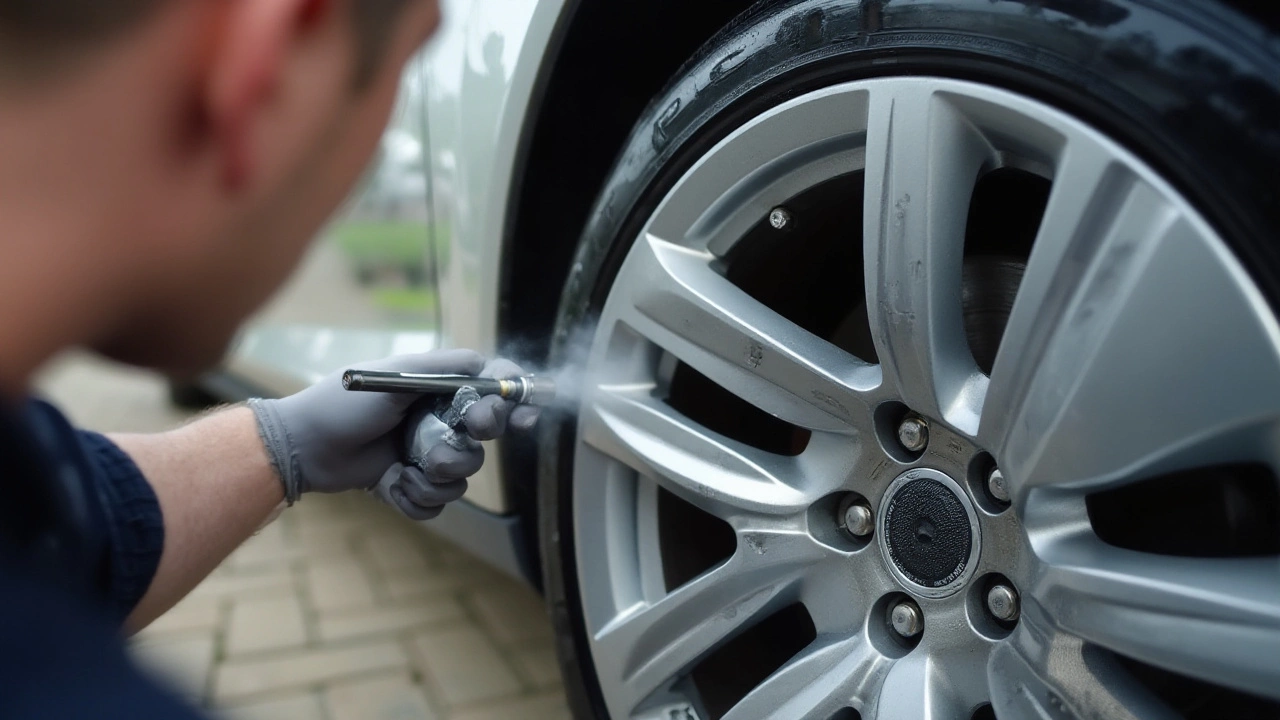
Repair Techniques and Their Effectiveness
When it comes to fixing alloy wheels, the truth is that the techniques have dramatically evolved over the years, largely due to advances in technology and a deeper understanding of material science. One of the most common methods is the grinding and repainting technique. This involves smoothing out scratches and gouges using a high-speed drill and sandpaper to restore the wheel’s surface. Once the imperfections are leveled, technicians repaint the wheel, matching the original color for a seamless finish. This approach is quite effective for surface-level damage and can breathe new life into a wheel that looks beyond help.
Another popular method involves welding. For cracks and deep gouges that go beyond just the surface, welding might be necessary. A professional will fill the cracks with aluminum welds, then grind them down to match the original surface level. It’s a meticulous process, demanding a high degree of skill, but when done correctly, it can make worn alloy wheels as strong as they were in their prime. Notably, the integrity of the weld must be checked to ensure safety, as poorly executed repairs can lead to wheel failure. As Thomas Henson, an automotive repair expert, points out,
"While welding is a powerful repair method, it requires the expertise of a highly skilled technician to ensure both the aesthetic and structural aspects are uncompromised."
There are also paintless techniques like diamond cutting, a method that involves machining the wheel on a lathe. The damaged area is precisely removed, and the surface is then polished back to a pristine finish. This technique is preferred when dealing with deeply ingrained curb rash, providing a factory-standard look upon completion. The effectiveness of diamond cutting is clear, given its ability to restore both the visual appeal and structural integrity of the wheel. However, this technique can’t be performed multiple times as it gradually reduces the wheel’s thickness.
For those dealing with minor cosmetic issues, DIY kits are widely available, promising enthusiasts an opportunity to handle their own repairs. These kits typically include filler compounds, sandpaper, and wheel paint. While they can be effective for small blemishes, caution is advised; they often lack the capability for deeper damage. A DIY approach might save money upfront, but it could cost more in the long run if the repairs aren’t robust.
It's important to compare the costs associated with different repair techniques. For instance, comprehensive repair services performed by professionals might run anywhere from $75 to $150 per wheel, depending upon the severity of the damage and the specific technique used. In contrast, DIY kits might cost less than $50. A choice between these options depends not only on the wallet but also on one’s technical prowess and the gravity of the damage experienced by the alloy wheels.
Sometimes data offers compelling insights. According to a survey among auto repair businesses, nearly 60% of alloy wheel repairs in urban areas involve re-machining or welding, with grinding being the go-to for less severe cases. Such statistics reveal the prevalent issues drivers face and the importance of choosing the right repair technique. The bottom line is, knowing your wheel’s material limitations and the extent of damage is vital in selecting the most effective repair method.
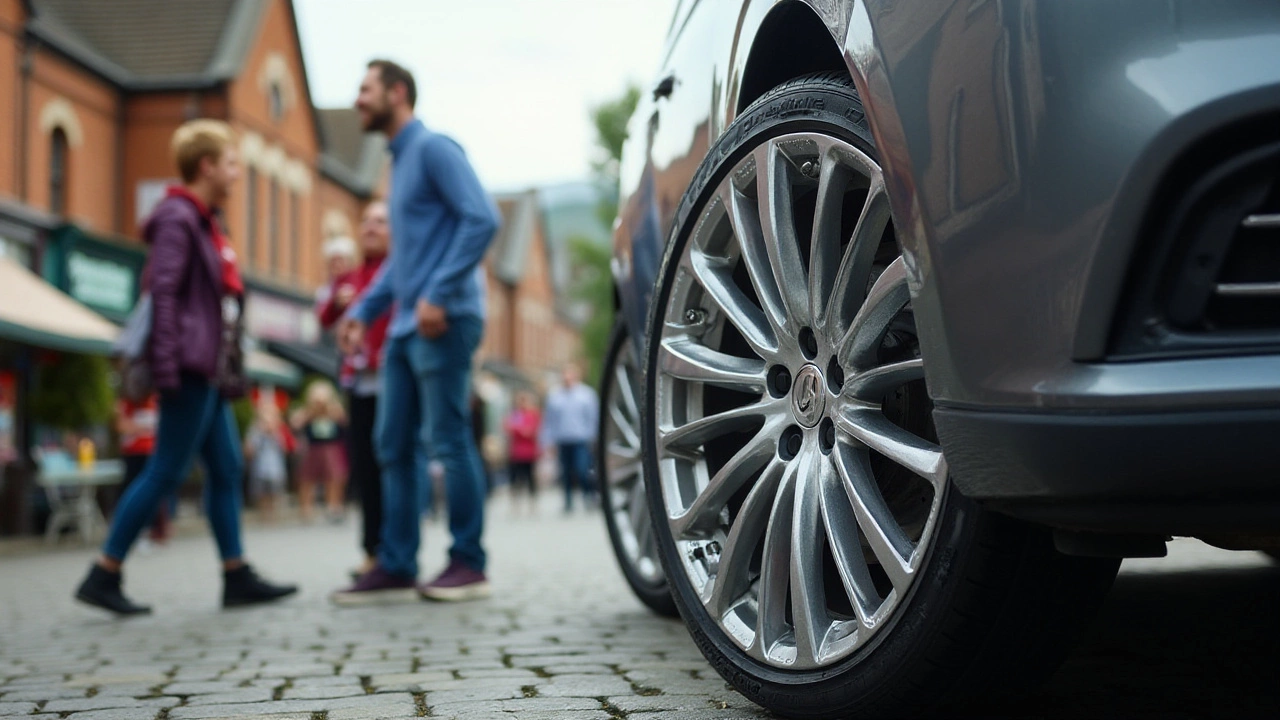
Cost Analysis: Repair vs. Replacement
Deciding between repairing and replacing your beloved alloy wheels often boils down to the extent of the damage and the financial implications involved. It's not uncommon for car owners to weigh the savings of immediate repairs against the longevity and performance of a full replacement. This choice can often feel like walking a tightrope. The initial cost of repairing typical scratches or slight curbing on alloy wheels is generally more affordable than purchasing entirely new wheels. Repair services range widely depending on the severity of the damage, starting as low as $50 and creeping upwards for more extensive work.
However, if the bends and cracks compromise the wheel's integrity, replacement might indeed be the safer, albeit more expensive option. Some drivers find themselves regularly paying for repairs that add up over time, finding that investing in new wheels would have been more economical in the long run. A typical set of new alloy wheels can range from $400 to $1,200, depending on the brand, size, and design preferences. Balancing the decision between both paths can be aided by considering factors such as long-term investment and predictability of driving conditions.
"A penny saved today might cost a dollar tomorrow," cautions auto expert Jay Martinez.
To illustrate the financial landscape of these decisions, consider this: repairing minor cosmetic issues can swiftly improve appearances and functionality for minor outlays. Yet, if one incurs a new dent every few months due to unavoidable road hazards, the accumulation of repair bills may prompt a total upgrade. Additionally, DIY approaches can reduce costs, though the risk of improper repairs could lead to additional expenses down the line if not executed carefully. For those who face more severe wheel damage, visiting a trusted specialist ensures a more accurate cost assessment and helps in the decision-making.
For avid drivers who relish the sleek look and feel of fresh wheels, marking their mental pros and cons list is key. An alloy rim's lifespan can be influenced significantly by how well it is maintained, as well as by geographical factors and driving habits, like frequent city driving which may expose the wheels to more hazards. A detailed cost analysis table can help visualize these considerations:
| Condition | Repair Cost | Replacement Cost |
|---|---|---|
| Minor Scratches | $50 - $100 | $400+ |
| Bent Rim | $75 - $150 | $500+ |
| Severe Cracks | Not Recommended | $600+ |
This analysis is a reminder of how nuanced the decision-making process can be. Whether one chooses to invest in meticulous repairs or plunge into the commitment of new wheels, it's about balancing immediate savings against longevity and reliability. Cost decisions around alloy wheel maintenance require careful contemplation of both current conditions and the driver's future needs.
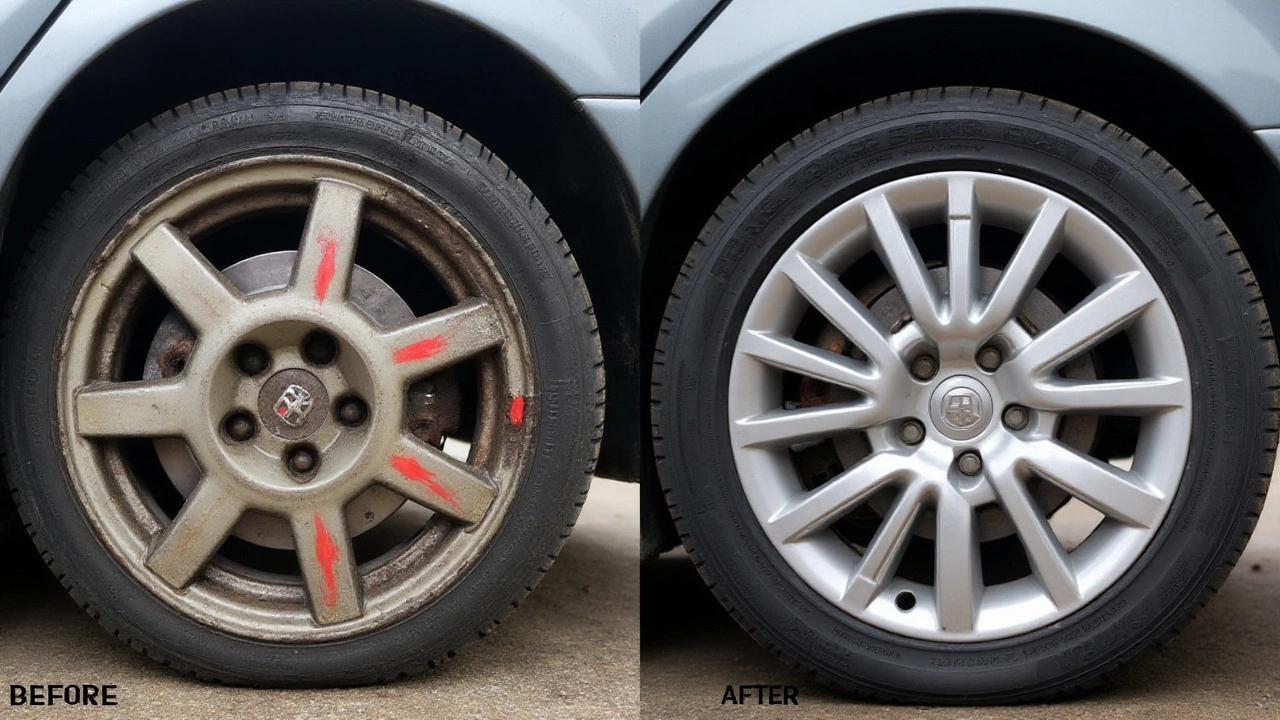
Maintenance Tips for Prolonging Wheel Life
Alloy wheels are not just about adding a touch of elegance to your vehicle; they are also about enhancing performance. To keep them looking pristine and performing optimally, regular upkeep is crucial. One key aspect of maintaining alloy wheels is diligent cleaning. Brake dust, road grime, and chemicals can wreak havoc on the finish of your wheels. Tackling this requires using a mild soap solution and a soft brush, preventing abrasive damage during the cleaning process. Consistent washing helps in maintaining their sheen and preventing corrosion, something every car owner should prioritize.
Protection is another vital factor. A quick application of a good quality wheel wax or sealant forms a protective barrier against contaminants and makes washing easier. These products prevent brake dust from embedding into the surface of the wheels. Invest in high-quality wax to enjoy the best protection for your prized wheels. Regularly applying such protective layers remarkably prolongs the impeccable appearance of alloy wheels, making routine maintenance much less of a chore.
Checking for damage early can save a heap of trouble. Regular inspections of your wheels for chips, scratches, or curb rashes allow you to address problems before they worsen. Small chips or scratches, if dealt with promptly, are often repairable at a fraction of the cost of replacing entire wheels. This proactive approach helps in maintaining both the aesthetic and functional aspects, ensuring longevity. As specialists often say, "Prevention is better than cure, especially when it comes to alloy wheels."
Proper tire care is an often overlooked aspect of wheel maintenance. Keeping your tires inflated to the manufacturer’s recommended pressures ensures the wheels support is evenly distributed. Improperly inflated tires can lead to uneven stress on the alloy wheels, increasing the likelihood of damage. Additionally, frequent wheel alignment checks ensure that any misalignment does not cause unnecessary strain, contributing to longer-lasting wheels.
Lastly, driving habits play a significant role in wheel longevity. Avoiding sudden stops and cautious navigation around potholes preserves the structural integrity of both the tires and wheels. Aggressive driving not only stresses the tires but also risks damage to the alloy rims, leading to expensive repairs or replacements. Driving with care showcases not only your understanding of automotive finesse but also extends the life of your beloved alloy wheels.


